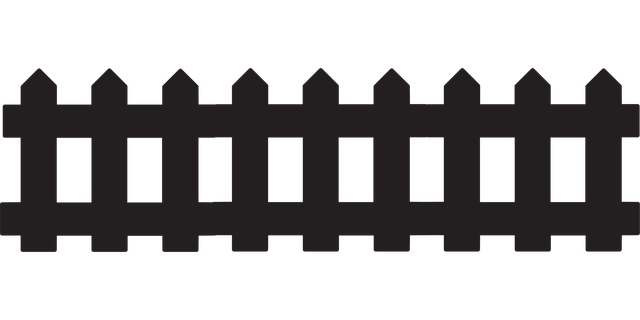Large properties present unique fencing challenges. While traditional solutions can be aesthetically pleasing, they often come with significant costs and maintenance requirements. This article explores cost-effective fencing options tailored for expansive lands. We delve into affordable materials, design strategies to minimize expenses, installation techniques ensuring longevity, and simple maintenance tips to maximize the value of your investment.
- Understanding Fencing Needs for Large Properties
- Traditional vs. Cost-Effective Solutions
- Exploring Affordable Fence Materials
- Design Ideas to Minimize Costs
- Installation Techniques for Longevity and Value
- Maintenance Tips to Keep Costs Down
Understanding Fencing Needs for Large Properties
Fencing a large property presents unique challenges compared to smaller plots. The primary consideration is not just aesthetics but also functionality and durability, especially in managing livestock or securing vast open spaces. Understanding these needs starts with assessing the perimeter’s topography—identifying hills, valleys, and any structures that might influence fence placement and type.
Additionally, owners must factor in accessibility for maintenance and potential future changes. For instance, a property with frequent wildlife crossings may require fencing designed to allow safe passage while keeping intruders out. Furthermore, climate plays a significant role; durable materials are essential in harsh weather conditions, ensuring the fence stands strong against high winds or heavy snowfall, thereby providing long-term cost savings through reduced replacement needs.
Traditional vs. Cost-Effective Solutions
Traditional fencing methods have long been the go-to option for property owners, offering a sense of security and aesthetics. However, for large properties, these methods can be both expensive and time-consuming to install and maintain. Traditional fences often involve intricate designs, requiring skilled labor and high-quality materials, which significantly drive up costs.
Cost-effective fencing solutions have emerged as a practical alternative, catering to the needs of modern property owners on a budget. These innovative options prioritize functionality, durability, and affordability without compromising security. By employing advanced technologies and simplified designs, cost-effective fences can be installed swiftly, reducing labor expenses. This approach allows property owners to enhance their outdoor spaces without breaking the bank.
Exploring Affordable Fence Materials
When it comes to fencing large properties, cost-effectiveness is a primary concern for many property owners. One way to achieve this is by exploring affordable fence materials that don’t compromise on quality or durability. Options like vinyl, wood, and chain link offer excellent value for money. Vinyl fences, for instance, are known for their low maintenance requirements and longevity, making them a popular choice among budget-conscious homeowners. Similarly, treated wood fences can withstand the elements and provide a natural aesthetic that enhances outdoor spaces.
Chain link fencing is another economical option, ideal for security and boundary demarcation. Its flexibility in terms of height and length makes it suitable for various property sizes. Moreover, these materials often come with pre-fabricated sections, reducing installation time and labor costs. By carefully considering the available options, property owners can find cost-effective fencing solutions that meet both their budget constraints and functional requirements.
Design Ideas to Minimize Costs
One effective way to reduce fencing costs for large properties is through thoughtful design choices. Instead of a solid, uniform fence, consider a mixed landscape with various types of barriers. For example, a combination of tall wooden posts and low, winding wire fences can provide both aesthetic appeal and functional security at a lower price point than all-wood or metal options.
Another cost-saving design idea is to incorporate existing natural features. If your property has trees, rocks, or streams, use them as part of the fence line instead of building entirely new structures. This not only minimizes material costs but also blends the fence seamlessly into the surrounding landscape.
Installation Techniques for Longevity and Value
For large properties, installing fences that last and retain their value is a significant investment. One key aspect to achieving this is choosing installation techniques that stand the test of time. Professional installers often employ robust methods such as concrete footing for posts, ensuring they’re securely anchored in place. This prevents shifting or leaning over time, which can compromise both structural integrity and aesthetics. Additionally, using high-quality materials like galvanised wire or treated wooden panels can significantly extend the fence’s lifespan, protecting against rot, rust, and pest damage.
Regular maintenance plays a crucial role too. Regular inspections for any signs of wear and tear, along with timely repairs or replacement of worn components, are essential to preserving the barrier’s effectiveness and visual appeal. Coating metal components, sealing wood, and keeping the area around the fence clear of debris and moisture are simple yet effective ways property owners can contribute to its longevity.
Maintenance Tips to Keep Costs Down
Regular maintenance is key to keeping your fencing costs down in the long run. Start by inspecting your fence at least once a month for any signs of damage, such as broken boards, loose posts, or rusted hardware. Repairs can be quick and simple, like replacing individual boards or tightening connections, which will save you from a full replacement. Keep an eye out for invasive plants or trees growing near the fence line; these can cause structural damage over time. Regularly trim back any overgrown vegetation to prevent it from damaging your fence or obscuring its appearance.
Additionally, applying a fresh coat of paint or sealant annually can protect your fence from the elements and extend its lifespan. This simple task not only enhances the aesthetic appeal but also prevents costly repairs due to weathering, rot, or rust. Consider using high-quality materials during maintenance work to ensure durability and minimize future replacements.
